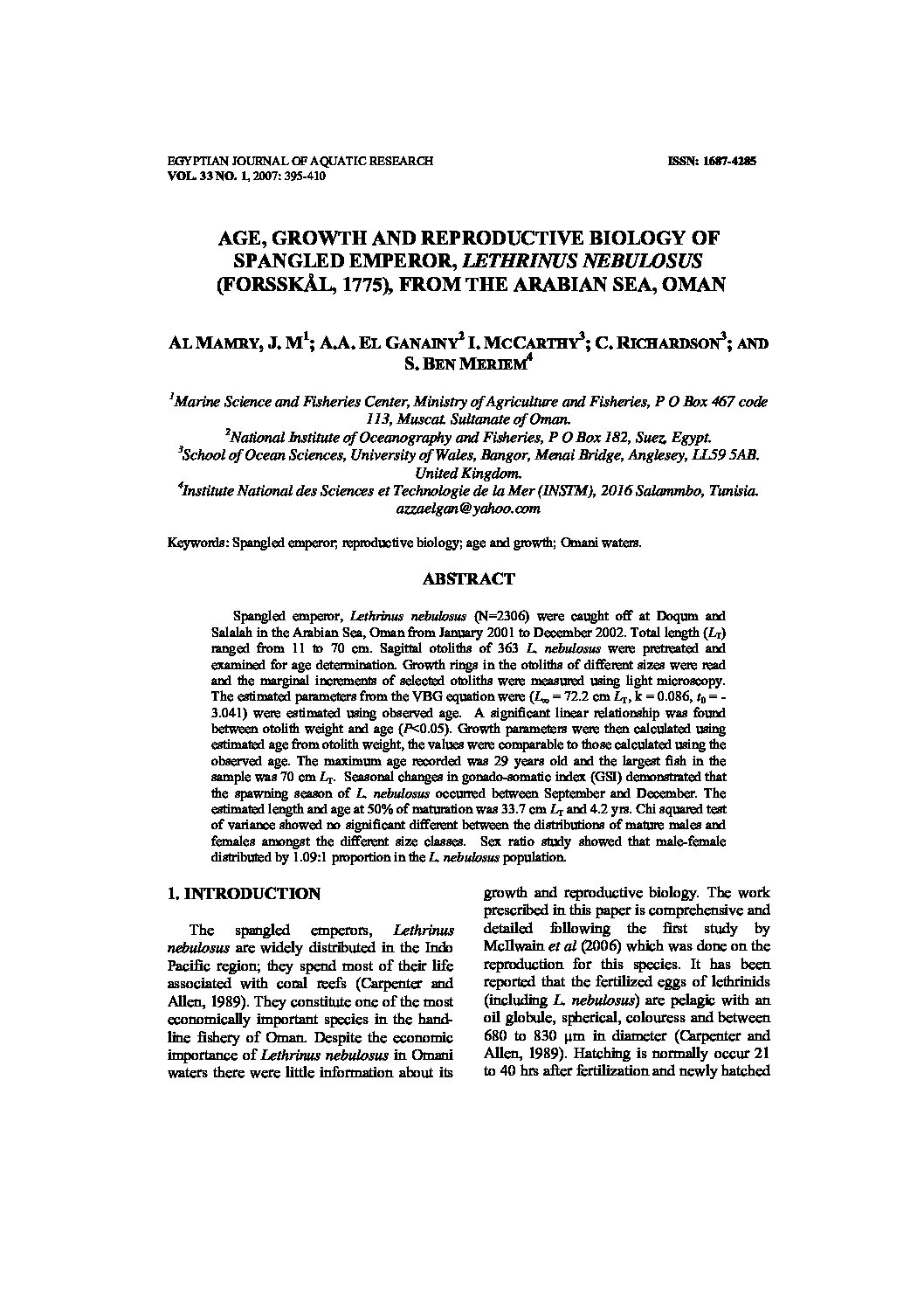Categories
vol-33ACUTE AND CHRONIC AMMONIA TOXICITY TO NILE
TILAPIA (OREOCHROMIS NILOTICUS) FINGERLINGS
AKRAM IBRAHIM ALKOBABY AND HESHAM ABDALLAH HASSANIEN
Animal Production Department, Faculty of Agriculture, Cairo University, Giza, Egypt.
E-mail address: [email protected]
Keywords: Nile tilapia, ammonia, acute, chronic toxicity
ABSTRACT
The effect of acute and chronic unionised ammonia (UIA) exposure on survival and
growth performance in Nile tilapia fingerlings were examined. Median lethal
concentrations (LC50) values of unionised ammonia at 24, 48, 72 and 96 hours post
exposure were 1.67, 1.44, 1.19 and 0.93 mg/l, respectively. The chronic experiment was
conducted over 60 days. Nile tilapia fingerlings with a mean initial weight of 10.43 g were
reared in four stable ammonia concentrations [0.006 (control), 0.098 (low), 0.15 (medium)
and 0.24 mg UIA/l (high)]. No mortality was observed during the whole experiment. No
significant differences was found in the SGR between the control group (1.25) and lowconcentration group (1.20) displaying higher growth rates than both the medium (0.58) and
high-concentration group (0.31) through the experimental period (P<0.05). Increasing
ammonia concentration affects feed conversion ratio (FCR) of fish exposed to 0.15 mg
UIA/l and 0.24 mg UIA/l, while did not affect those exposed to 0.098 mg UIA/l. The noobservable effect concentration was 0.098 mg UIA/L. Increasing the concentration of
ammonia higher than this value negatively affects the growth rate of fish. However, it could
be concluded that although Nile tilapia fingerlings can tolerate the high ammonia polluted
conditions, ammonia concentration should be kept lower than 0.098 mg UIA/L to obtain a
good conditions for growth.







